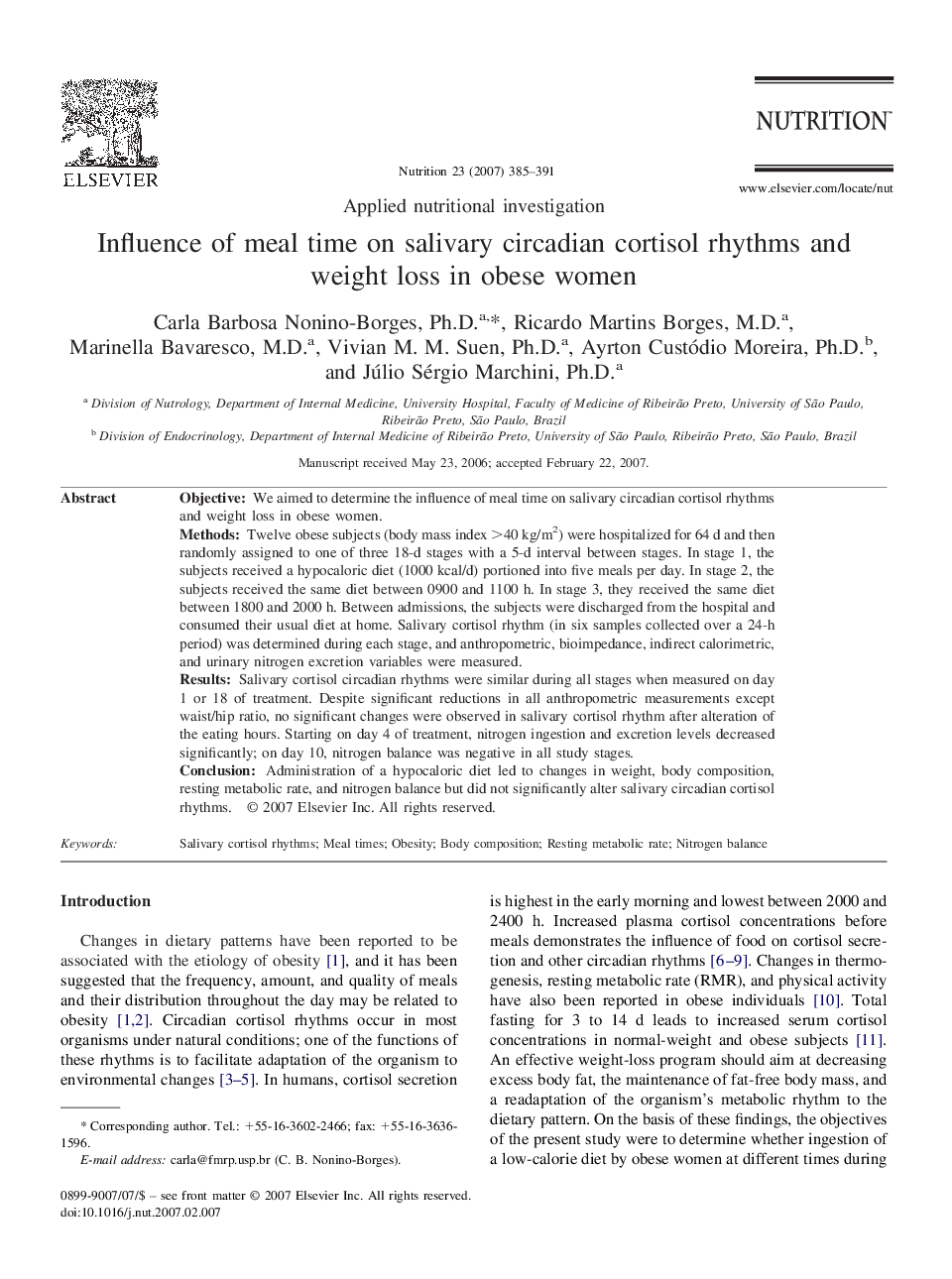| Article ID | Journal | Published Year | Pages | File Type |
|---|---|---|---|---|
| 3277485 | Nutrition | 2007 | 7 Pages |
ObjectiveWe aimed to determine the influence of meal time on salivary circadian cortisol rhythms and weight loss in obese women.MethodsTwelve obese subjects (body mass index >40 kg/m2) were hospitalized for 64 d and then randomly assigned to one of three 18-d stages with a 5-d interval between stages. In stage 1, the subjects received a hypocaloric diet (1000 kcal/d) portioned into five meals per day. In stage 2, the subjects received the same diet between 0900 and 1100 h. In stage 3, they received the same diet between 1800 and 2000 h. Between admissions, the subjects were discharged from the hospital and consumed their usual diet at home. Salivary cortisol rhythm (in six samples collected over a 24-h period) was determined during each stage, and anthropometric, bioimpedance, indirect calorimetric, and urinary nitrogen excretion variables were measured.ResultsSalivary cortisol circadian rhythms were similar during all stages when measured on day 1 or 18 of treatment. Despite significant reductions in all anthropometric measurements except waist/hip ratio, no significant changes were observed in salivary cortisol rhythm after alteration of the eating hours. Starting on day 4 of treatment, nitrogen ingestion and excretion levels decreased significantly; on day 10, nitrogen balance was negative in all study stages.ConclusionAdministration of a hypocaloric diet led to changes in weight, body composition, resting metabolic rate, and nitrogen balance but did not significantly alter salivary circadian cortisol rhythms.
